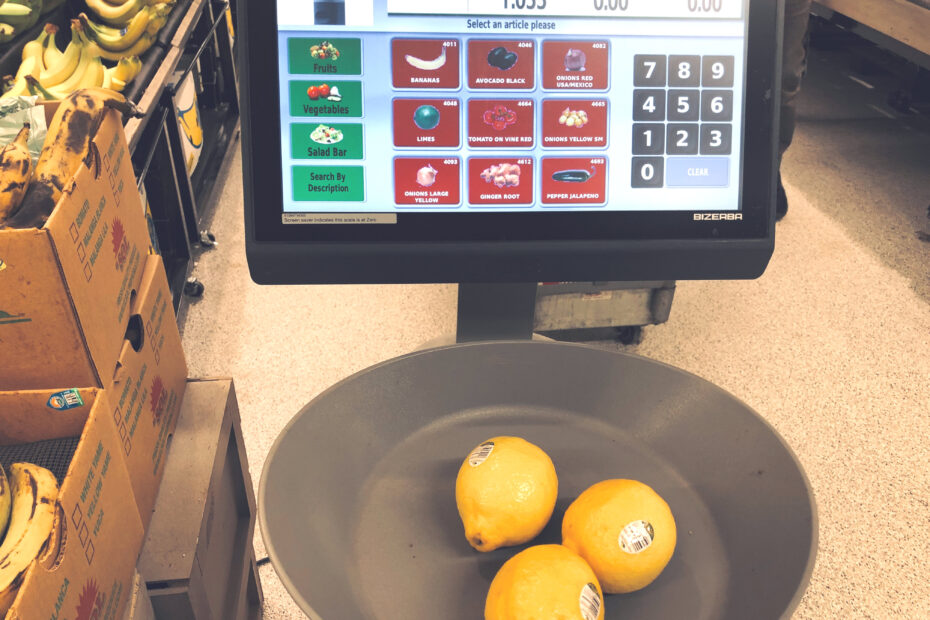To seduce buyers with the aromas and vibrant colors of fresh fruits and vegetables, grocers typically locate produce sections near the front of the store. If the produce is sufficiently sexy, grocers anticipate that the dopamine hit will encourage shoppers to open their wallets wider as they traipse through the aisles.
Efficiency hounds like me use Giant Food’s (a subsidiary of Ahold Delhaize) ScanIt scanners in lieu of checking out at the end of a grocery shopping trip. When all you have is a scanner, everything in the cart must look like a barcode, as in Maslow’s hammer.
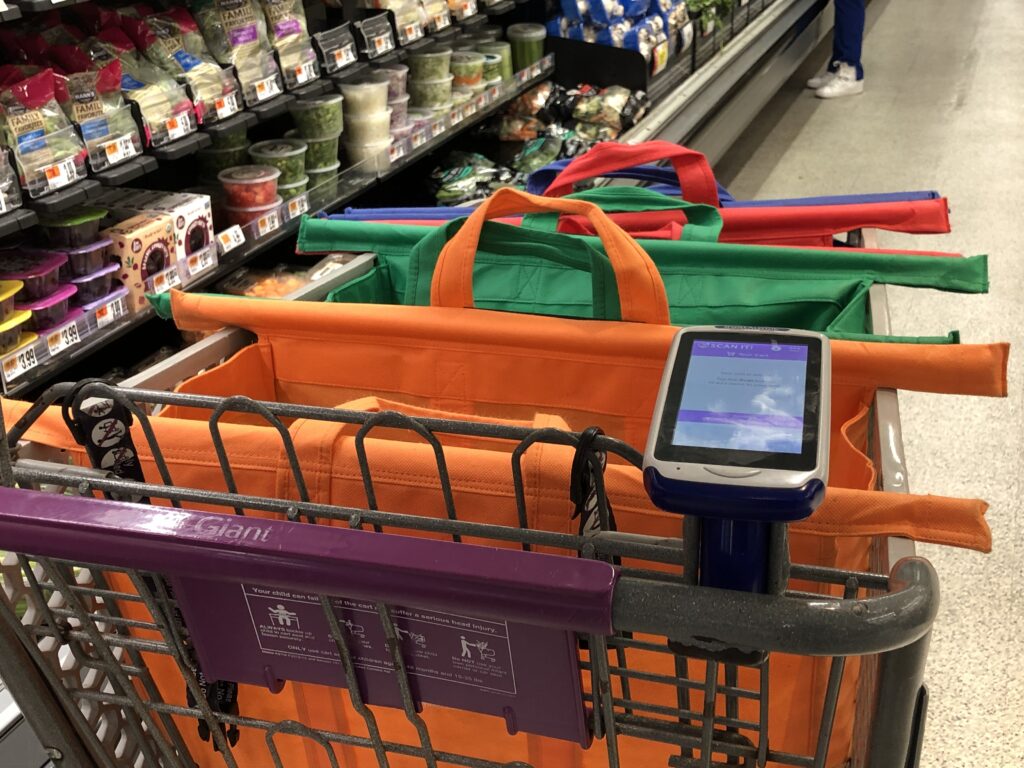
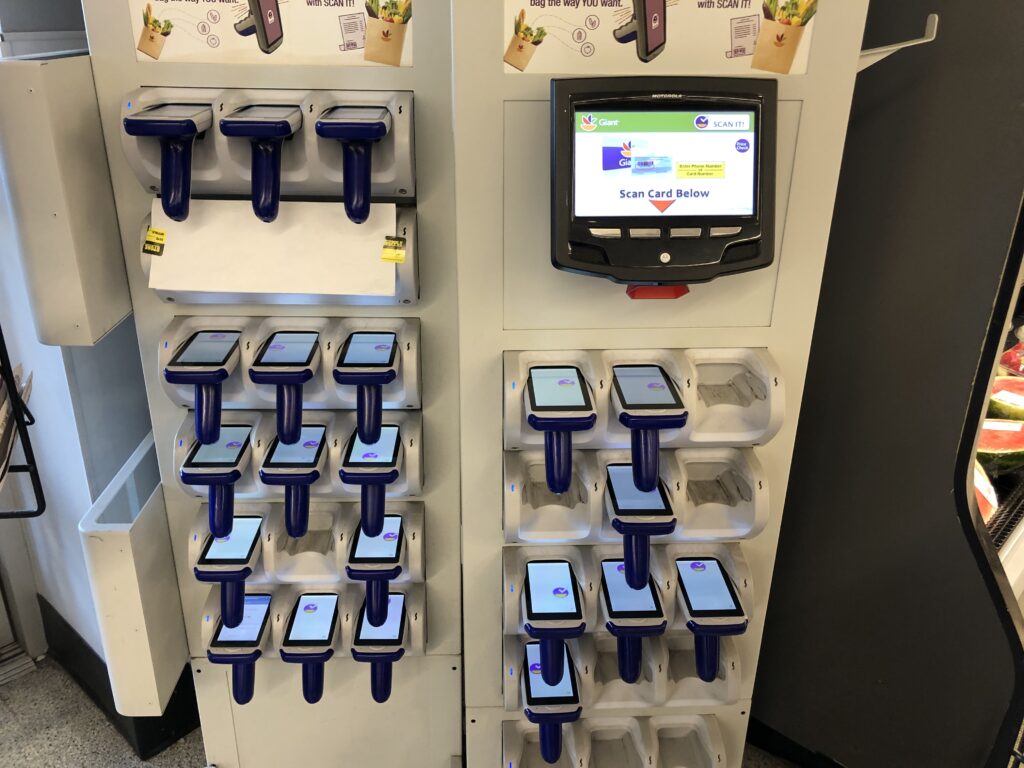
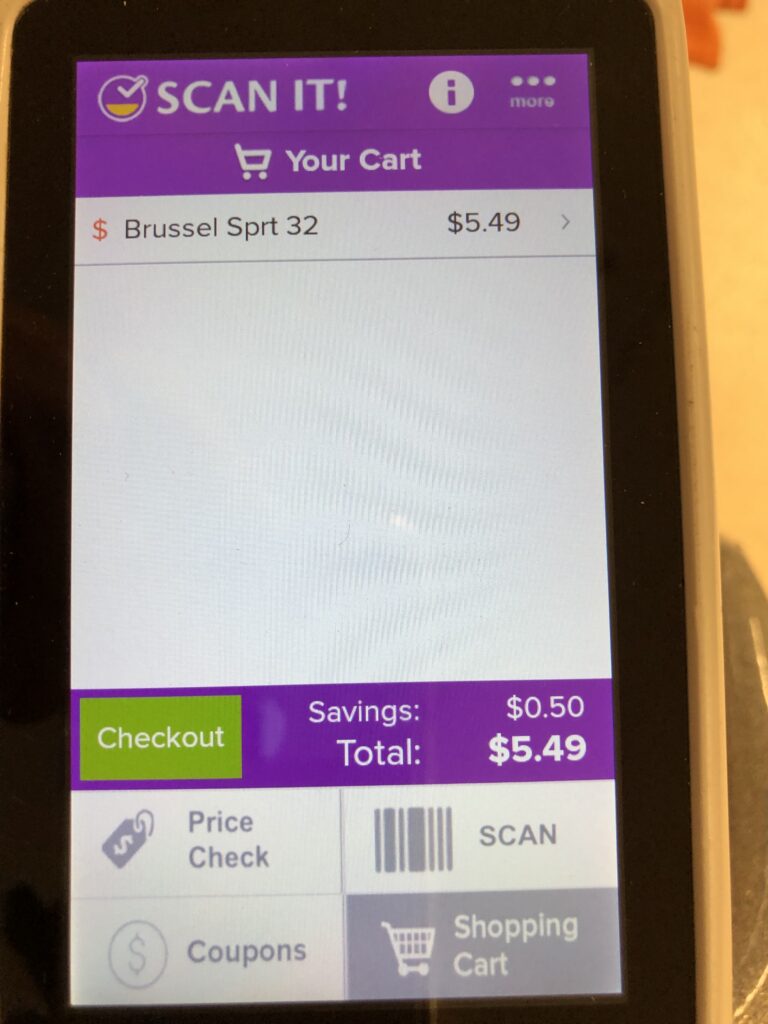
The ScanIt scanner’s need for a barcode conflicts with the sensory overload of displaying loose fruits and vegetables to shoppers, most of which lack barcodes. Giant Foods addresses this by providing communal scales that spit out stickers with a printed barcode, which shoppers scan and affix to the item.
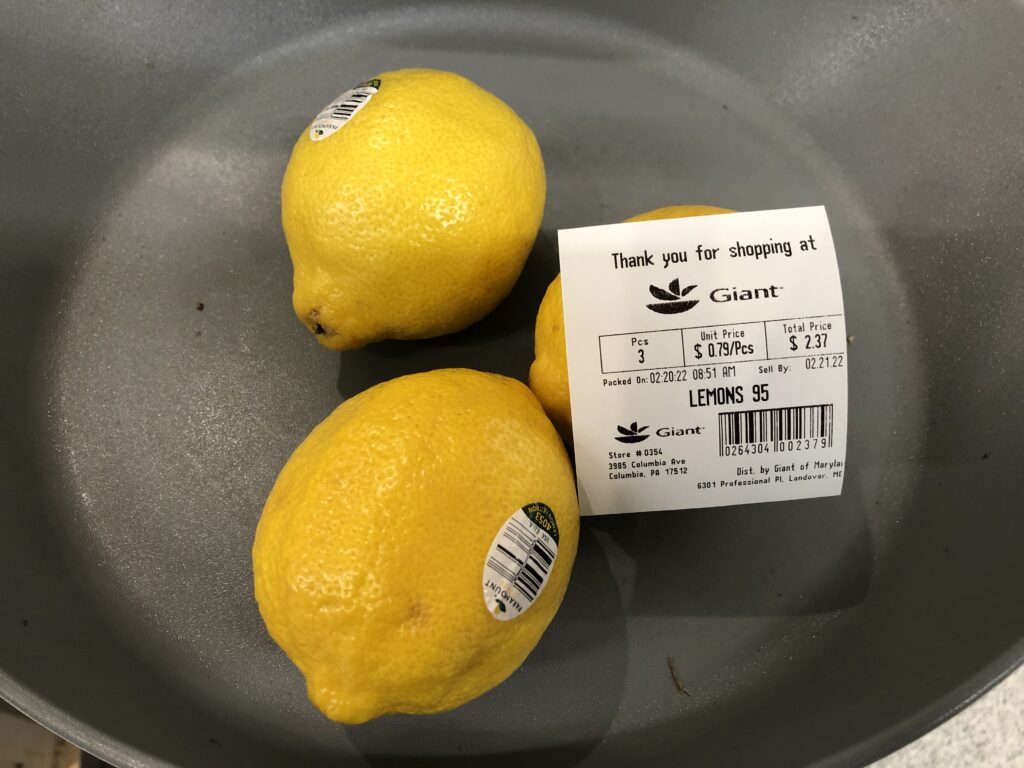
Sounds like a great solution, right? Wrong.
My local Giant Food store has four scales that dispense barcode stickers. At any time, at least one of these scales is malfunctioning. The most common issue is running out of barcode sticker paper, but the scales also experience electrical, software, and printing problems. Often, a perfectly functioning scale prints a barcode sticker that the scanner cannot read.
My recent wait to weigh produce on the only working scale in the produce section gave me time to think about other options, ordered by viability:
1. Iterate on what’s already in use
Instead of printing stickers with barcodes, show an on-screen barcode on the scale’s screen that shoppers can scan with their handheld device.
Pros:
a. Except for a software change to the scales, this solution requires no new hardware or infrastructure. It’s a lightweight, cost-effective approach.
b. Eliminates the most common problems with barcode-printing scales — running out of paper or printing unreadable barcodes.
c. Getting rid of needless paper stickers is an environmental winner.
Con:
Although the most common scale problems have been eliminated, they still break regularly, frustrating shoppers who have to wait in line for the limited number of working ones.
2. Sell produce items by the ‘each’
Pricing, say, bananas at $0.19 each instead of $0.59 a pound. Currently, loose items without barcodes sold by the each require the shopper to identify the items on the scale, enter the quantity being purchased, and scan a printed barcode sticker. Adding some intelligence to the handheld device would put an end to the need for scales.
Pro:
Removes the need to weigh produce and streamlines the shopping process.
Cons:
a. Inherent unfairness. Customers who choose larger items get a good deal, while those stuck with smaller ones get ripped off.
b. Loose items without barcodes necessitate new data entry capabilities on the handheld device to avoid using the scales.
3. Wrap produce into packages with barcodes
This requires a store to shrink-wrap all their produce items, creating packages of various sizes and weights, each with a barcode.
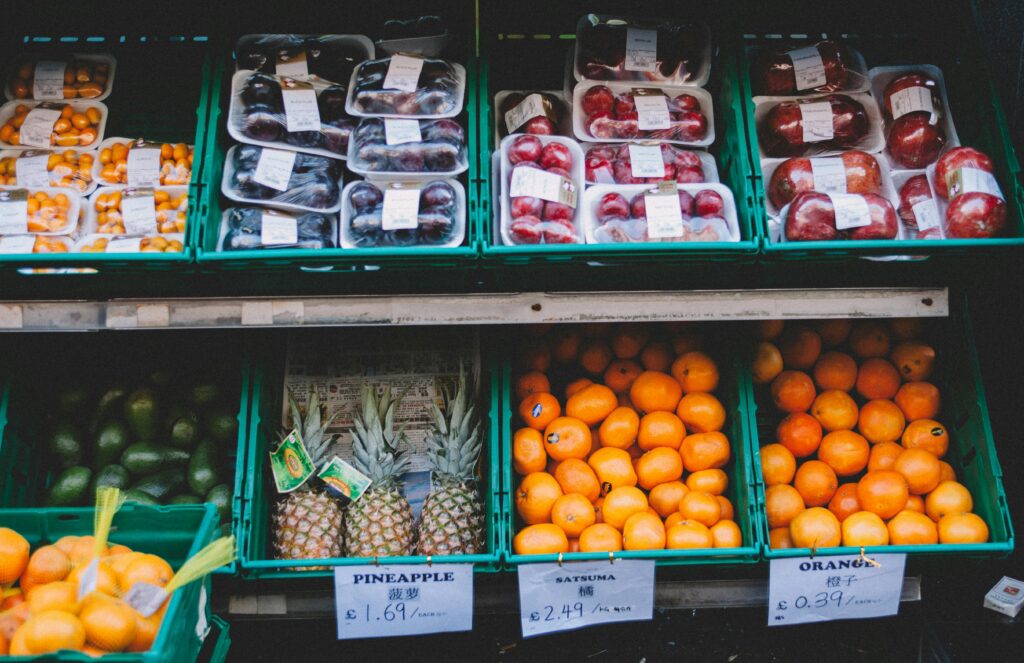
Pro:
Super-fast way to shop in the produce section
Cons:
a. A tedious process for store employees. The additional labor and material costs associated with this packaging would probably be passed on to the shopper.
b. Creates an unsustainable solution that would anger any environmentalist.
c. Deprives the store of the allure of the fresh scents of fruits — and the subliminal message for shoppers to spend more money.
d. May impact the produces’ freshness and longevity.
4. Make a Bluetooth connection
The customer still weighs the produce on the scale. Instead of spitting out a barcode sticker, the scanner and scale establish a Bluetooth connection. A pop-up on the scanner displays the item, weight, and price, and asks the customer to accept or reject.
Pros:
a. Removes the most common problems with barcode-printing scales — running out of paper or printing unreadable barcodes.
b. Getting rid of needless paper stickers is an environmental winner.
c. Cool use of technology to solve a problem.
Cons:
a. Unless the Bluetooth connection always works perfectly, this solution will create a bigger problem than it solves. Anyone who’s struggled to connect AirPods for a Zoom meeting probably understands the pitfalls of this approach.
b. Requires significant software changes to the relatively simple scanning application. Again, this may introduce instability and bugs that are worse than having to scan barcodes.
Occam’s Razor — let’s not go overboard
Technology already exists to outfit shopping carts with cameras and image recognition software. Tricked-out carts could automatically recognize the avocado a shopper tosses into the cart and add it to the tally. However, if the image recognition isn’t swift enough to distinguish escarole from frisée, the high-tech becomes more of a nuisance than a helper, especially when it’s easy for the shopper to specify what they’re buying.
An automobile loaded with every possible bell and whistle might improve the driving experience and impress friends. However, adding too much complexity can result in higher maintenance costs and disgruntled users. A dependable, functional solution is far preferable to one with cutting-edge technology that is difficult to maintain and costly to repair.
The simplest solution is usually the best one.
